
Article contents

With new technology, buying shares in the UK is now super easy. First, choose an investment platform (a place to buy shares like an app or website), then sign up, add money and buy the shares. The hard bit is managing your investments – we recommend leaving it to the experts. Here's how to do both – buy shares yourself and let the experts manage everything.
Keen to start investing? Great decision – your future self will be really grateful! However, it can be a minefield out there, but don’t worry, we’ve got you covered. Here’s how to buy shares in the UK in just 3 easy steps.
Do you want to invest in general, or are you looking to buy specific shares of a company?
If you’re new to investing, or a seasoned pro, we recommend letting the experts handle most of your investing. They know what they’re doing and have years of experience growing people’s money over time. They’ll use sensible investment strategies and put the right investment portfolio (the investments you own) together to suit your investing goals – which is normally long-term growth over time.
However, we don’t mean using a financial advisor. We mean using an expert-managed investment platform (recommendations below). There's some super easy ones to use, and you’ll simply pick from a few options such as how much risk you’d like to take with your money – from low risk to higher risk.
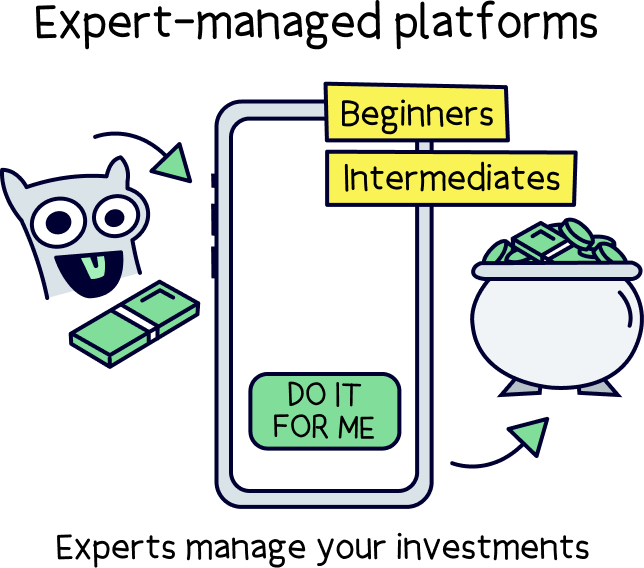
Don’t let the word risk put you off, it simply means the investment strategy the experts use. With a higher risk option, the goal is to grow your money more in the long-term, but with bigger ups-and-downs in the short-term (over a few years). With a lower risk strategy, there will be fewer ups-and-downs in the short-term but your money will grow slower in the long term.
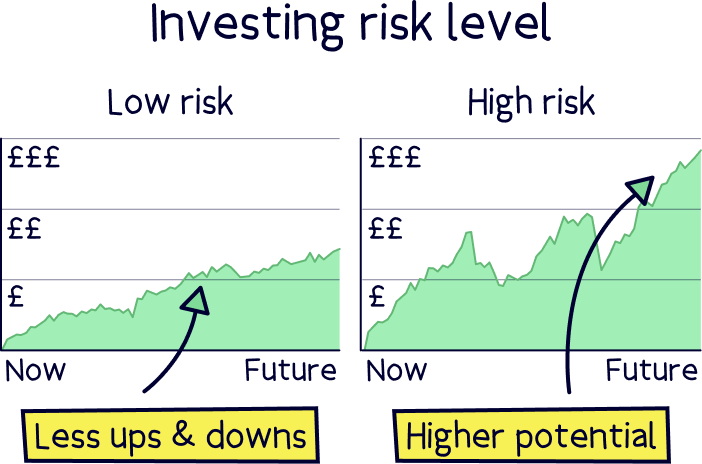
So, if you’re young(ish) and want to save for retirement (a sensible idea), it’s a good idea to have a higher risk investment strategy to grow your money more over time, and ride out the ups-and-downs – as you won’t be needing the money any time soon. If you’re a bit older, and nearing retirement, it can be a better idea to opt for a lower risk strategy, as you might want to use the cash sooner.
Anyway, if you want to let the experts handle things, you’ll need to get an expert-managed investment platform.
Or, if you’d still like to buy shares yourself, you’ll need to use a self-managed investment platform – these can be called different things, such as a share dealing platform. But, they’re all stock brokers, which are companies that buy and sell stocks and shares for you (explained below).
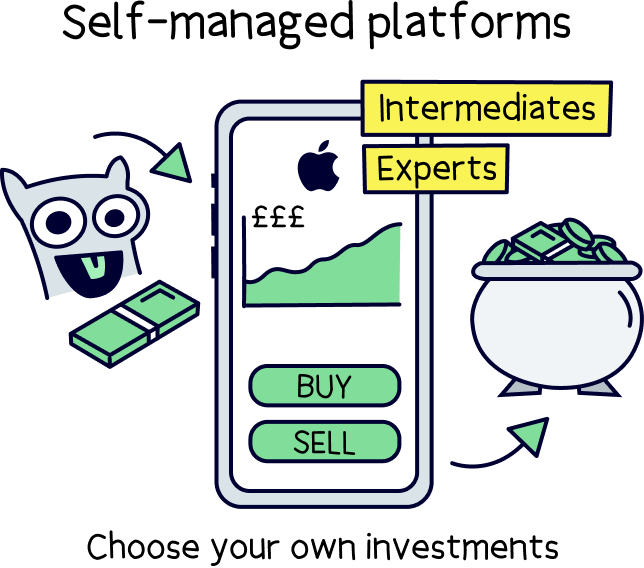
Either way, we’ve reviewed all the best investment platforms. And here they are:
Lightyear is an awesome investing app, very low cost and you can invest tax-free within an ISA.
Great app



A great and easy to use investing app. Add money from your bank or transfer your existing ISA, with the investments handled by experts. There’s a pension pot too.
The customer service is excellent, with support based in the UK.

Beach is an easy to use investing app (and easy to set up), just add money and the experts handle everything. It’s all managed on your phone with a great app, and you can see your total savings whenever you like.
You’ll get an easy access pot (access money in around a week), which can be an ISA where all the money you make is tax-free (save up to £20,000 per tax year), and a standard account for those saving in addition to this (or who don’t want an ISA), where there’s no contribution limits (but also no tax-free benefits).
The investments are managed by experts from the largest investment company in the world (BlackRock). And they consider things like reducing climate change, meaning your savings could make the world a little better in future too.
There’s also an optional pension pot to save for retirement, so you can keep all your savings in one place, and if you’ve got lost or old pensions, Beach can also find them and move them over too.
Fees: a simple annual fee of up to 0.73% (minimum £3.99 per month).
Minimum deposit: £25
Customer service: excellent
Pros:
Cons:



Moneyfarm is a great option for saving and investing (both ISAs and pensions). It's easy to use and their experts can help you with any questions or guidance you need.
They have one of the top performing investment records, and great socially responsible investing options too. Plus, you can save cash and get a high interest rate.
The fees are low, and reduce as you save more. Plus, the customer service is outstanding.

Pros
Cons
Lightyear is an awesome investing app, very low cost and you can invest tax-free within an ISA.
Buy shares and make your own investments.
Lightyear is an awesome investing app, very low cost and you can invest tax-free within an ISA.
Get up to £100 free share



Lightyear is an awesome mobile app with very low cost investing.
There’s a decent range of investment options (over 4,000 stocks and ETFs), you can store multiple currencies, and the app itself is modern and super slick.
ETFs are commission-free, and stocks are max. £1/$1/€1 per order. There's also very low currency conversion fees of 0.35%, or you can hold the currency itself and avoid this fee.
You can invest with a tax-free ISA, a regular account and a business account.
And if you’ve got cash savings, you’ll also get one of the best rates possible with their Cash ISA (it matches the Bank of England base rate).




eToro is one of the best investment platforms out there - and is by far the most popular, with over 30 million customers.
Why? eToro is very low cost (commission-free stocks), easy to use, and has lots of awesome trading features. There's also a community of other traders to learn from and even copy.
It’s also got the largest range of assets to trade and invest in – including stocks, ETFs, crypto, CFDs, currencies and commodities (such as gold).




AJ Bell is well established, with a good reputation.
It's one of the cheapest traditional stock brokers out there (charging a low annual fee).
There's a huge range of investment options – pretty much every investment out there (including both funds and shares).
The customer service is great too.
Overall, it's one of the best options.

If you’ve decided to use an expert-managed investment platform, you wont need to do much. The experts will take care of everything, all you need to do is sign up, and add your money. We recommend making regular payments, and over time your money should grow and grow. Don’t forget, investing is for the long term, so there will be ups-and-downs along the way. The key is to not take your money out, keep investing it over time.
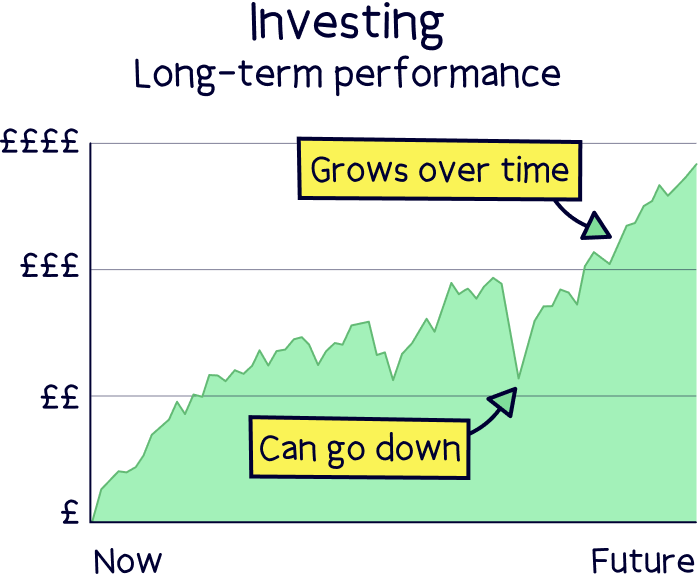
If you’re looking to buy shares yourself, once you’re all set up on a self-managed investment platform, or a stock broker, look for the shares you’d like to buy on the platform.
It's worth mentioning, not all stock brokers have the same companies listed (to buy their shares). The investment platforms we’ve recommended have some of the largest range of stocks and shares you can get.
Note: you can only buy shares in companies that are publicly traded. That means they’re listed on a stock exchange (such as the London Stock Exchange (LSE)). Lots of companies are private, this means you can't buy their shares on the stock exchange.
Pretty simple right? Just 2 steps to buy shares and investments!
The hard bit is building your portfolio and managing it over time (your portfolio is just another word for your investments).
Ideally, you’ll have a long-term focused, diversified portfolio that covers a wide range of investments and types of investments (such as shares, ETFs, bonds, property – more on those below), so you have the right balance for long-term growth.
A small range of investments can mean your portfolio might not perform well if one type of investment, or group of investments, performs badly. For instance, if the energy industry performed badly in the future and you had most of your money in them, your portfolio won't grow as much as you’d like.
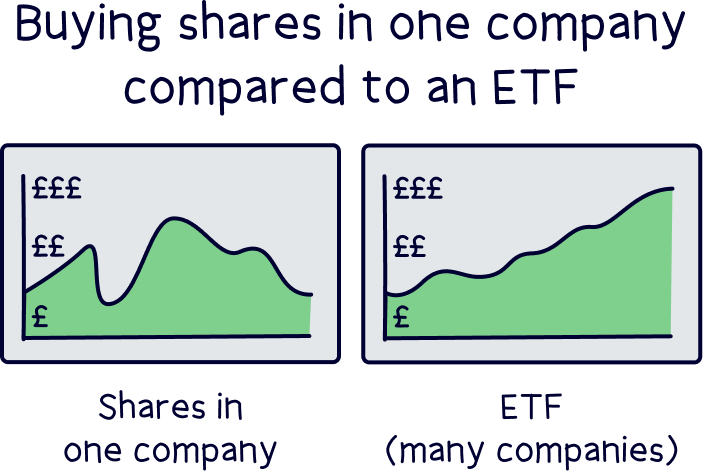
Ideally, you’ll most likely want to follow the right investment strategy that builds a well diversified portfolio for long-term growth over time, and is assessed regularly and changes made if needed.
Buying shares in a single company without being part of an well-rounded investment portfolio is often not a great investment strategy for long-term growth.
That’s why we recommend simply letting the experts handle things for you. It makes it far easier – you don’t have to do much! You can be sure your money is in the right investment strategy and growing over time.
Investing yourself can be hard, and you need to spend a lot of time and effort learning about investing too. Why not simply let the experts handle it, and spend your time enjoying life with your friends and family?
Alternatively, use a ready-made investment portfolio that the experts manage, and buy shares that you’d like separately – the best of both worlds!
Check out Beach¹, they offer a tax-free Stocks & Shares ISA¹ managed by a team of experts and you can even set up a pension pot too. It's also easy to use with a great app.
You can also check out the best investment platforms to view all of your options – you’ll find self-managed investment platforms there as well – making it easy to buy shares and make your own investments. We recommend Lightyear¹ if you’re new to that too – it’s low cost and easy to use.
Nuts About Money tip: if you’re looking to buy and sell shares within a short period of time (called trading) – there’s better investment platforms for that. Here’s the best trading platforms to learn more.
There’s lots of different investments out there, much more than just shares. Let’s take a quick look at the most common types:
This is where you buy part of a business, you buy a share of the business. These can rise in value if the company does well, and can pay out their profits to shareholders (called dividends).
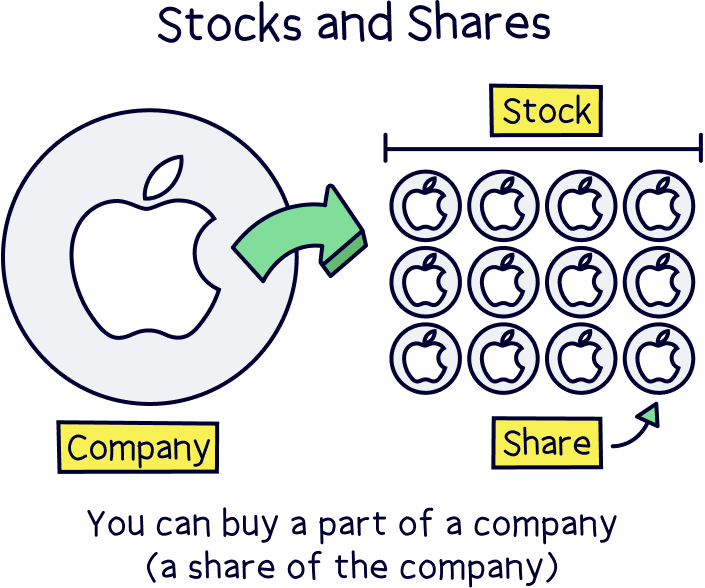
These are groups of shares and other investments all pooled together into a single investment, so it’s super easy to buy and you don't have to buy lots of different investments. For instance, technology companies or green energy companies. ETFs can be bought and sold on stock exchanges, just like shares.
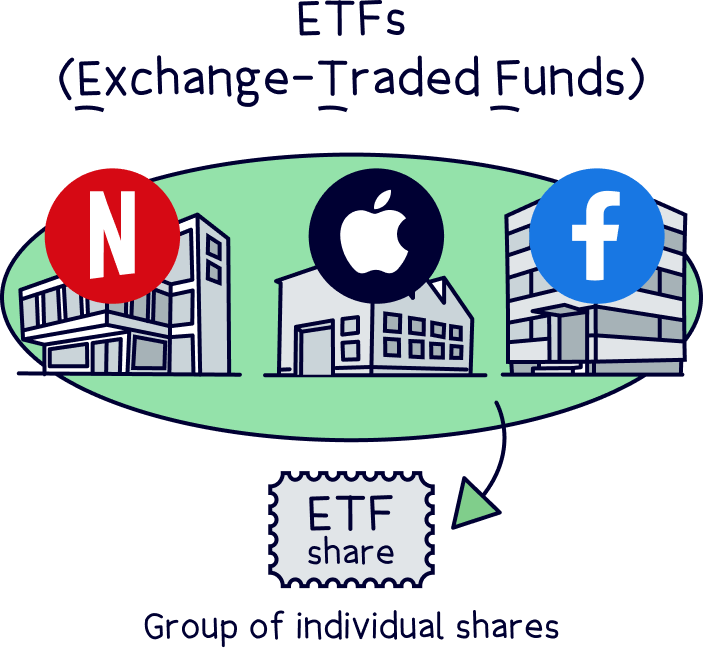
These are where you loan your money to a government or large corporation in return for interest. Typically seen as lower risk.
This is typically commercial property that pays rent (an income).
The best thing about buying shares in the UK, is that you can invest within a Stocks & Share ISA (also called an investment ISA). This is where everything you make is completely tax-free, forever!
So you won’t pay any Capital Gains Tax, Income Tax, or Dividend Tax on any of the money you make within your Stocks and Shares ISA. These are taxes you could otherwise pay if your investments grow in value or provide an income (lots of companies pay out their profits to their shareholders – called dividends).
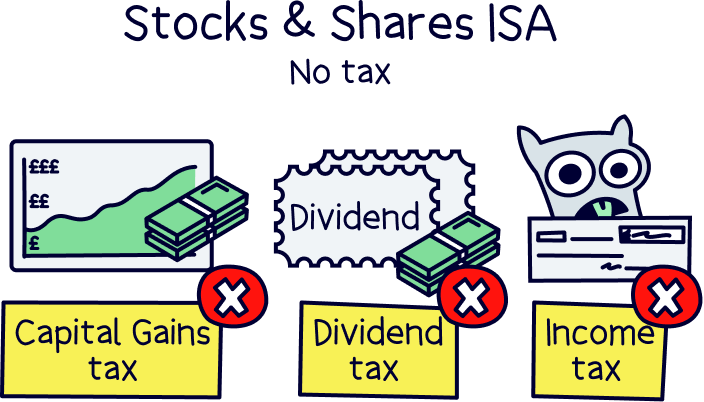
You can invest up to £20,000 each tax year, which runs from April 6th to April 5th the following year. This is called your annual ISA allowance – and is shared across all the different types of ISAs, such as a Cash ISA (for cash savings) and a Lifetime ISA (to save for your first home) too.
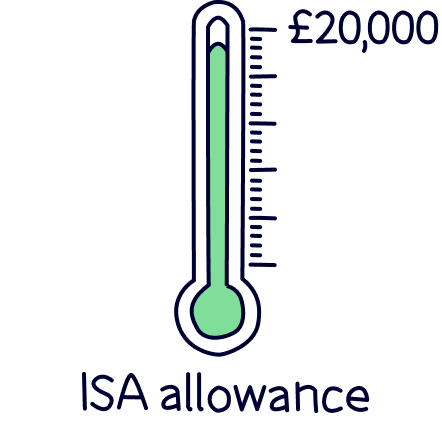
Find out how much your Stocks and Shares ISA could be worth in the future with our Stocks and Shares ISA calculator.
If you hit this limit you can use a General Investment Account (GIA), also called a share dealing account, to make your own investments – like buying other shares and investments you’d like. With this account you might have to pay Capital Gains Tax (and other taxes), if you make over £3,000, this is called the Capital Gains Tax allowance.
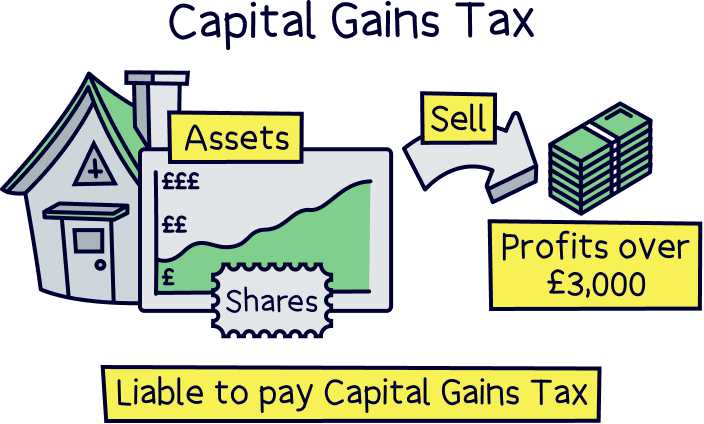
Stocks and Shares ISA are a great way to invest, but there’s another investment account just as good, if not better for long-term investing, and that’s a personal pension.
A personal pension is a pension that’s in your name, and you decide when to add money and withdraw money (as long as you’re over 55). They’re highly recommended to have in addition to the State Pension (government pension), and a workplace pension (set up by your employer) to help boost your pension pot ready for retirement.
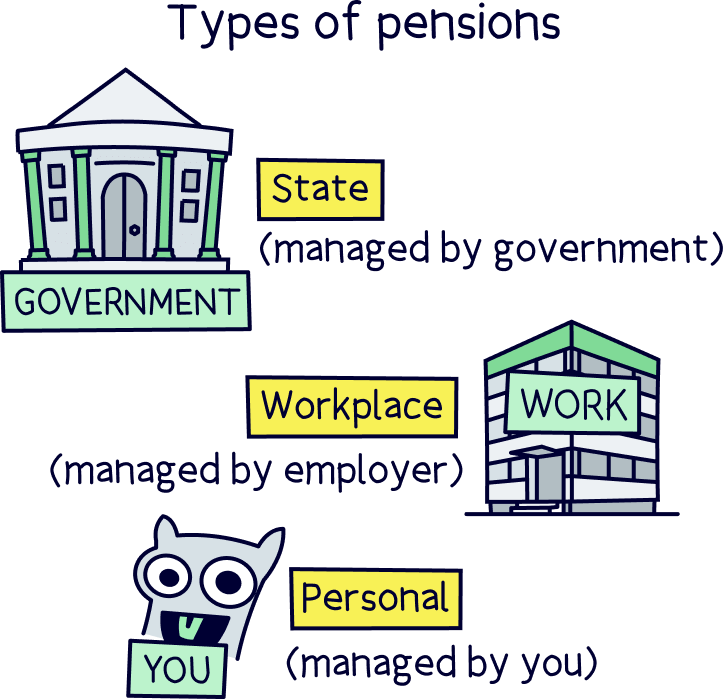
They have some huge benefits. First, everything you save is completely tax-free as it grows. However, you might pay tax on it when you start withdrawing it, but the first 25% is completely tax free. How much tax you’ll pay on the remaining 75% depends on how much your income is at the time.
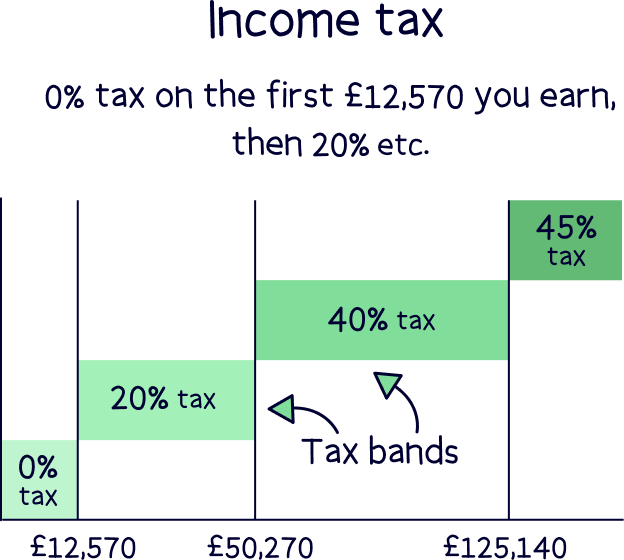
Speak to an independent financial advisor if you’d like specific tax advice for when you retire – you can find great financial advisors with Unbiased¹.
And second, you get a massive 25% on everything you pay in. Yep, we’re not joking! The government will add this bonus to your pension automatically after you pay in. It’s to refund the tax you’ve paid on your salary (or self-employed income), as pensions are intended to be tax-free saving.
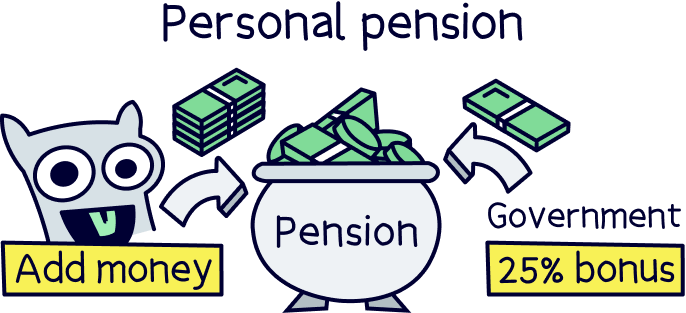
If you’re a higher-rate taxpayer (40%) or additional rate taxpayer (45%), you can also claim some tax back at these rates too. This can make a massive difference to the overall amount of money in your pension pot over the years! You’ll do this on your Self-Assessment tax return.
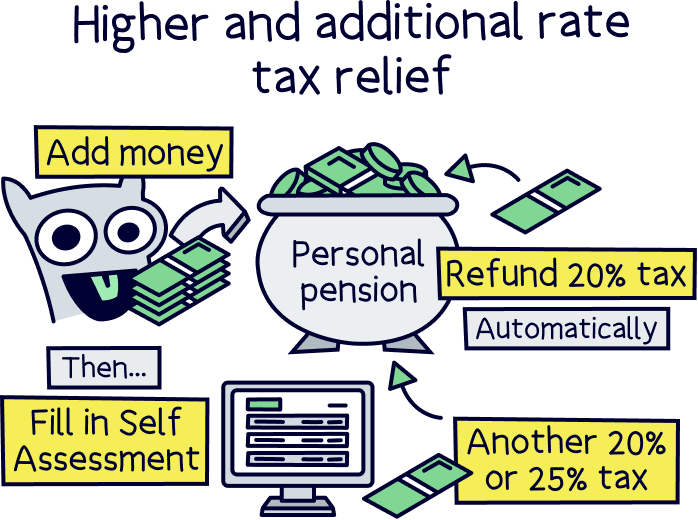
Anyway, with personal pensions, just like investment accounts, you can choose an expert-managed pension or a self-invested personal pension (SIPP).
With expert-managed pensions, they’ll handle everything and grow your money over time. Our recommendation is PensionBee¹, it's super easy to use, has a great investment track record, low fees and great customer service. Here’s our best pension providers to view the full range.
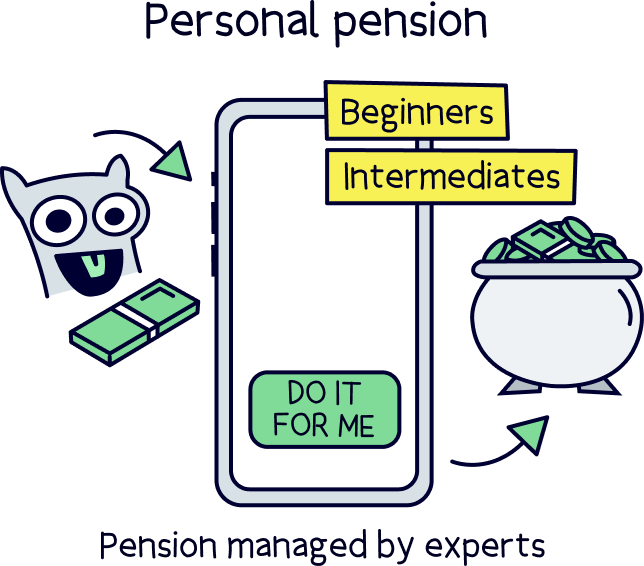
With self-invested personal pensions (SIPPs), you can make your own investment decisions, and buy and sell shares and other investment types. These are suited to more experienced investors. If you think these are for you, here’s the best SIPPs.
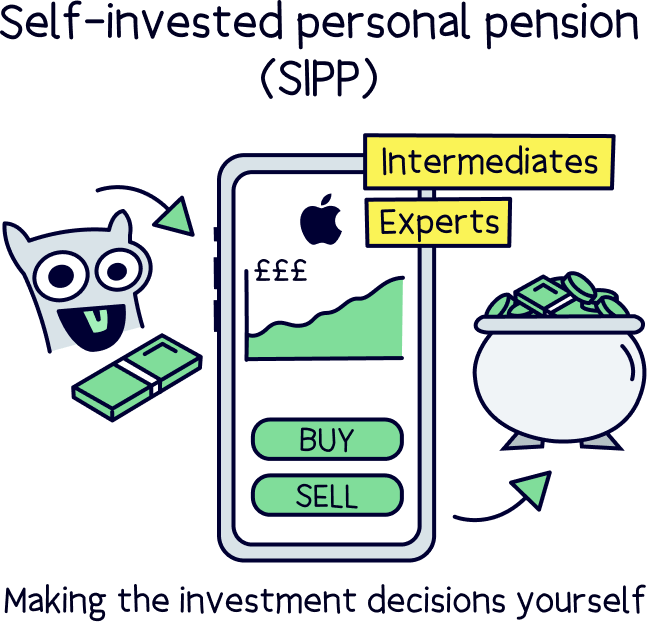
It's important to note, you can't access money within a pension until you're 55 (57 from 2028). At Nuts About Money, we see this as a good thing – you're not tempted to spend your money. Not having this temptation can mean you retire a lot earlier, or have a pension pot big enough for a more comfortable life in retirement.
Nuts About Money tip: not sure how much you’ll need in your pension pot to retire? Here's our retirement income calculator and here's how much you should be paying into your pension.
A stock exchange is a place to buy and sell shares. There’s normally at least 1 in every country in the world, for instance in the UK, we have the London Stock Exchange (LSE) and the Alternative Investment Market (AIM) for smaller companies. In the US, they have the New York Stock Exchange (NYSE), plus others.
If a company has decided to sell shares to the public (like us), they will need to be listed on a stock exchange, and in doing so they become a public company. Issuing their first public shares is called an IPO, or initial public offering.
A stock broker (an investment platform) will connect to the stock exchange to buy or sell shares on your behalf – which is all done instantly with computers these days.
Sometimes this can be called a stock market – but really that’s a general term for the whole industry of buying and selling shares rather than a specific stock exchange.
Here's the best online stock brokers in the UK.
The good news is that investing doesn’t need to be expensive, in fact, the fees are often far lower than what you’ll make in the long term!
What you’ll actually pay depends on how you’re investing, and which investment platform you use.
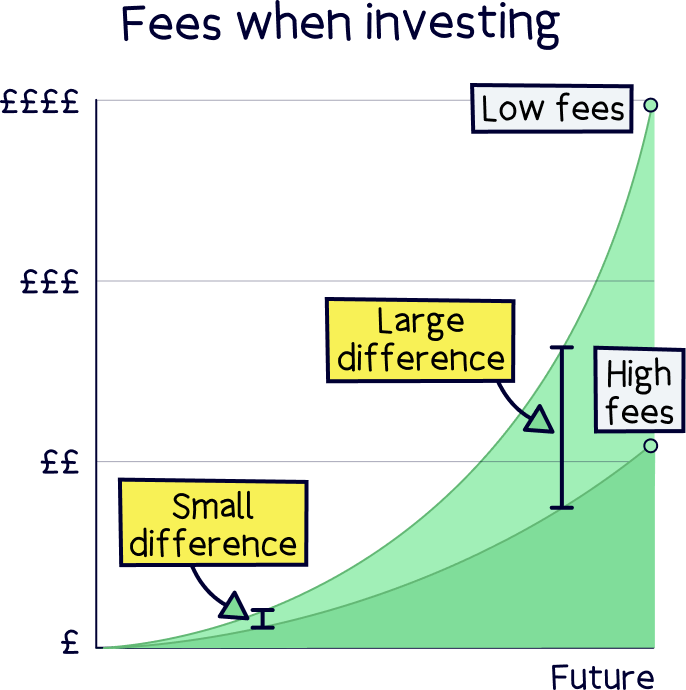
With expert-managed investment platforms, you’ll pay an annual account management fee, and this is normally a percentage of the total you have invested. This can vary from 0.25% to 1%+ depending on which platform you want to use. This fee can sometimes be called a platform fee.
You’ll then pay a fee as part of the investments themselves, and this is also called a management fee, or fund fee. This pays for the experts to manage the investments as part of the investment fund, and again a percentage of how much you have invested. This can range from 0.1% to 1%+ depending on the investment fund.
And when investments are bought and sold there can also be fees. These are fairly minimum and often less than 0.1% per year.
In total, expect to pay around 0.75% to 1.25% per year. One of the best expert-managed investment platforms is Beach¹.
Self-managed investment platforms are similar to expert-managed, where you’ll typically have an annual management fee for the stock broker to hold your investments. This is often a percentage of the amount you have invested, but can be a flat monthly fee. And with some platforms there’s no fee.
Then you might pay a fee to buy and sell shares, called a share dealing fee, which normally ranges from £1.95 to £11.95 – however, depending on which platform you use, there might not be any share dealing fee at all.
To find out more visit our top share dealing accounts.
If you’re buying investment funds, such as the FTSE 100 (top 100 largest companies in the UK) and S&P 500 (top 500 companies in the US), you’ll normally pay a percentage of your investment total, which ranges from 0.1% to 1%+ depending on the investment fund.
As you don’t have the experts handling things, self-managed are typically cheaper than expert-managed, but not often by much.
Is buying shares a bit easier than you thought? We hope we’ve made it as simple as possible! Investing really is the best thing you can do for your financial future, if done sensibly and with experts handling things (unless you’re a pro!).
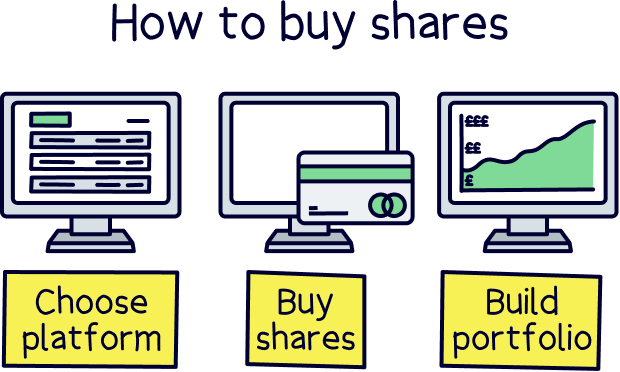
In the UK, when using a Stocks & Shares ISA and a personal pension, you’ll be able to save and grow your money completely tax-free. And with a pension, get a 25% bonus from the government on everything you pay in too (you might pay tax when you start withdrawing money from your pension, but don’t let that stop you saving into it – you’ll make more in the long run).
We highly recommend saving and investing for the long-term, for a tax-free ISA here's the best expert managed platforms and for pensions, check our PensionBee¹ they have a great track record of growing money over time, super easy to use, low fees and great service. Or compare all of the best pensions in the UK.
If you’re looking to make your own investments and buy shares, check out the best investment platforms to find the right one for you.
Finally, if you want to learn more. Here’s our investing home page.
And that’s all there is to it. All the best investing!
Lightyear is an awesome investing app, very low cost and you can invest tax-free within an ISA.
We’d love to hear from you, and it will help others too.
Lightyear is an awesome investing app, very low cost and you can invest tax-free within an ISA.